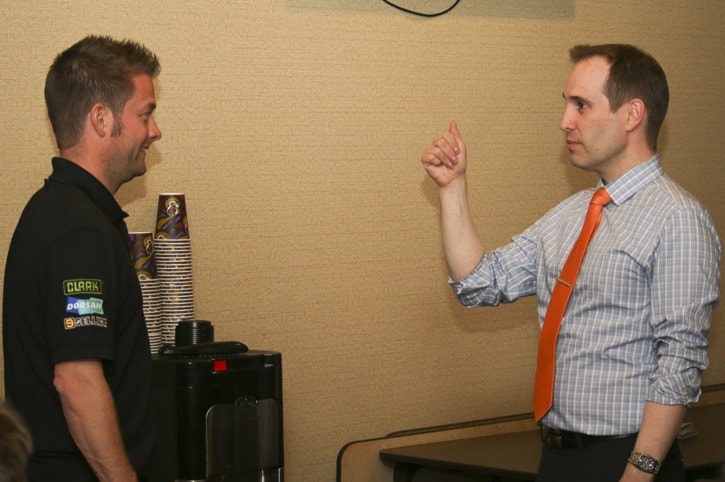Local lacrosse coaches were treated to a night of learning how to recognize symptoms of concussions, presented by special guest speaker Dr. Norman Hoffman.
Hoffman has training and experience in chiropractic work with a focus on neurology.
The meeting, held at the Comfort Inn and Suites, is where 13 lacrosse coaches learned the symptoms of a concussion and how to respond.
Each coach was given detailed information on what questions to ask when evaluating for concussion symptoms.
The questions included how to evaluate cognitive and physical reactions in eye movement, verbal response, motor movement, balance and coordination.
The coaches practiced asking the different questions listed on the sheet with each other and circling the numbers in evaluation.
This was practice for knowing how to respond in the case of a player showing the signs of a concussion, enabling the coaches to react that much quicker for getting their athletes help.
Hoffman said it is important for coaches to be able to recognize concussion symptoms in the first place.
“Most people, up until recently have encouraged their athletes to shake it off, be tough and just keep going and that’s just the sign of being a man or being a good athlete,” he said.
Hoffman emphasized the great importance of being able to recognize a possible concussion.
“If the athlete seems disoriented to time, place and person in any way, shape, or form, that lets you know there’s something that should be evaluated by an appropriate medical professional,” he said.
An athlete showing signs of a concussion should be checked out by a doctor, preferably one who has been trained in concussion management.
Hoffman said coaches should not be treating their athletes, but should be recognizing signs of injury when their athletes are performing.
“As the athlete tries to do activities it will bring on concussion symptoms the coaches should be familiar with,” Hoffman said. “Whether it’s headaches, disorientation,fatigue, nausea, blurred vision, confusion or just simply don’t feel right, a coach should be able to recognize that and hopefully get them to be properly evaluated.”
Hoffman said his goal was to train the coaches enough for them to be able to recognize when something isn’t right and when to call 911 in medical emergency situations.
It is important for coaches to recognize when their athletes need to be checked out for a possible concussion the first time around.
If the athlete does in fact have a concussion that goes untreated there is a possibility of the athlete having a second concussion referred to as second impact syndrome or double impact syndrome.
“The worst thing that can happen to an athlete that’s already got a concussion is they get a second concussion,” Hoffman said.
Having a double impact syndrome can cause permanent brain injury, hence the importance of ensuring a first concussion is taken care of properly.
To ensure an athlete is ready to go back to playing their game, they have to be properly examined by appropriate medical professionals, be well rested, fully recovered and have a doctors permission to play again.
“If they get a double impact injury that doesn’t just end their game, that ends their season, and possibly their career and possibly other things they would have liked to have done in their life,” Hoffman said.
reporter@sylvanlakenews.com
